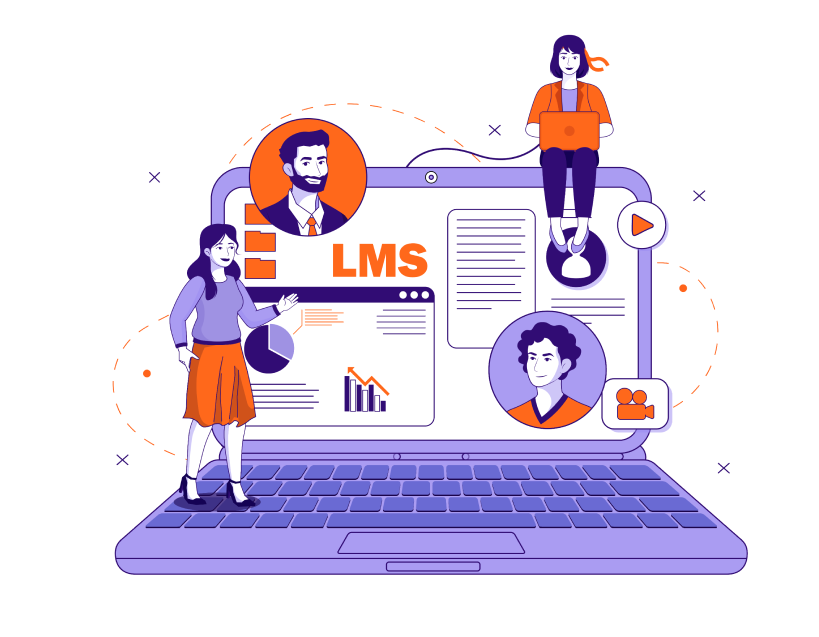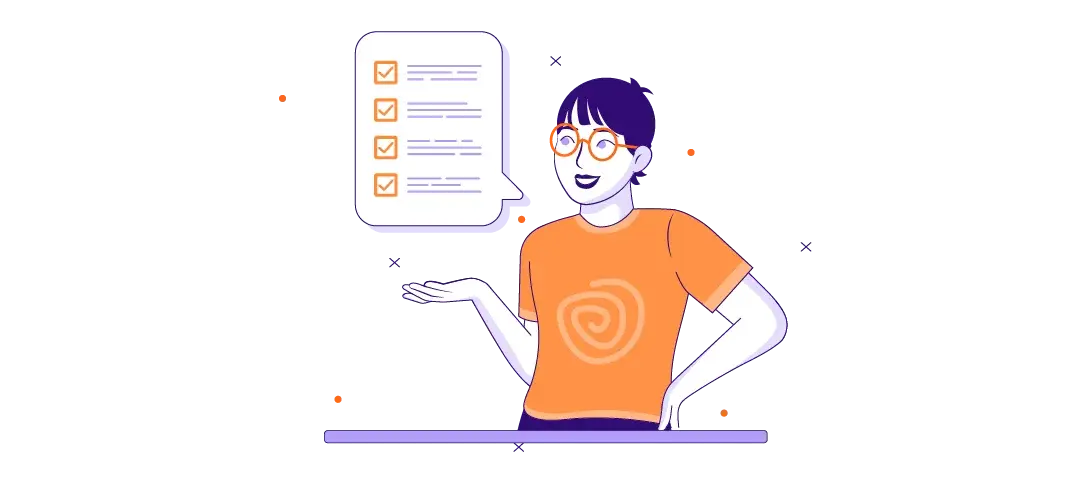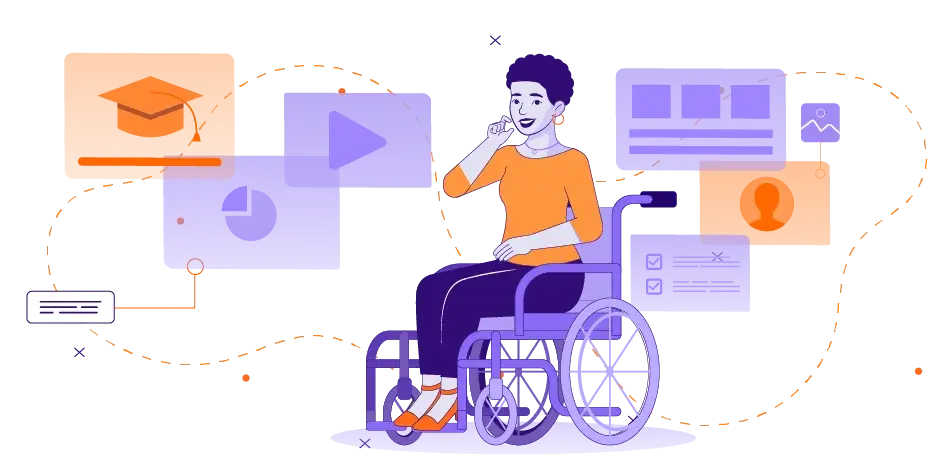
The Comprehensive LMS Implementation Project Plan for Modern Learning (2024)
The importance of Learning Management Systems (LMS) in fostering modern learning experiences cannot be overstated. LMS implementation has become a crucial step for organizations seeking to enhance their learning and development strategies in alignment with digital trends.
This comprehensive project plan delves into the essentials of LMS implementation, offering insights and strategies to ensure a successful transition to digital learning. Whether you’re an educational institution or a corporate entity, understanding the nuances of LMS implementation can significantly impact your approach to training and development in the digital age.
The Strategic LMS Implementation Plan
A well-planned LMS implementation can streamline learning processes, enhance employee training, and ultimately contribute to organizational success. By following these strategic steps and incorporating best practices, organizations can lay the groundwork for a successful and impactful learning platform.
1. Assessing Organizational Needs: Understanding Your Learning Objectives and Requirements
The first step in LMS implementation is a thorough evaluation of your organization’s learning needs. This process involves identifying skills gaps, training objectives, and the specific requirements of different learner groups within your organization.
Consider conducting a comprehensive needs analysis to understand the various dimensions of your training requirements, including technical skills, compliance training, and professional development. This evaluation will provide valuable insights into the type of content, learning methodologies, and technological features your LMS should support.
2. Establishing Clear Learning Goals
Set clear, measurable learning goals aligned with your organizational objectives. These goals should guide the selection of LMS features and functionalities, ensuring that the platform you choose can effectively support your training initiatives. Consider both short-term training needs and long-term educational goals to ensure the sustainability and scalability of your LMS.

3. Choosing the Right LMS: Identifying Key Features and Functionalities
Selecting the appropriate LMS is a decision that significantly impacts the effectiveness of your learning initiatives. Key criteria to consider include the LMS’s features, scalability, user-friendliness, and integration capabilities. Look for an LMS that offers a robust set of tools and features such as course authoring, gamification, mobile accessibility, and advanced analytics. Ensure that the platform is scalable and can grow with your organization’s evolving needs.
4. Ensuring Seamless Integration and Compatibility
The LMS should seamlessly integrate with your existing systems, such as Human Resources Information Systems (HRIS), Customer Relationship Management (CRM) platforms, and other enterprise software. This integration is crucial for data consistency, streamlined workflows, and a cohesive learning experience. Additionally, assess the LMS’s compatibility with various content formats and eLearning standards to ensure a smooth transition and content migration.
5. Building a Project Team
Assembling a Cross-Functional Team for LMS Implementation A successful LMS implementation requires the formation of a skilled, cross-functional project team. This team should include IT specialists, training and development professionals, content creators, and representatives from the user community. Each member brings unique insights and expertise, contributing to a well-rounded implementation strategy.
6. Defining Roles and Responsibilities
Clearly define the roles and responsibilities of each team member. This clarity will facilitate effective collaboration and ensure that all aspects of the LMS implementation, from technical setup to content development and user training, are adequately addressed. Encourage open communication and regular meetings to keep the team aligned and on track toward implementation goals.
Implementing an LMS is a strategic process that requires careful planning and consideration. By thoroughly assessing organizational needs, choosing an LMS that aligns with your learning objectives, and building a competent project team, organizations can lay a solid foundation for a successful LMS rollout. These steps are instrumental in creating a dynamic and effective learning environment that supports organizational growth and employee development.
Executing the Project Plan: LMS Implementation: Setting Up, Training, and Testing for Success
LMS implementation hinges on detailed planning, careful configuration, comprehensive user training, and robust testing protocols. Now that we are done with planning, let’s discuss a step-by-step guide on setting up your LMS, delivering essential training to different user groups, and conducting thorough testing to gather feedback for continuous improvement.
7. Setting Up the LMS: Configuring and Customizing Your Learning Platform
The first step in LMS implementation is setting up and configuring the platform. This process involves several critical stages:
- System Configuration: Begin with the basic setup of the LMS, which includes configuring server settings, user roles, and security parameters. Ensure that the system settings align with your organization’s IT policies and learning objectives.
- Customizing the Interface: Customize the LMS interface to reflect your organization’s brand and learning culture. This customization can include logo incorporation, color scheme adjustments, and layout modifications to enhance user experience and engagement.
- Course Setup: Upload and organize your learning content. Set up course structures, upload materials, and define learning paths. Ensure that the course designs align with your overall training objectives and cater to diverse learning styles.
- Integrations: Integrate the LMS with other critical systems like HRIS, CRM, or talent management systems for streamlined data flow and cohesive functionality.
- User Training and Support: Empowering Administrators, Instructors, and Learners. Effective training and support are crucial for maximizing the benefits of your new LMS.
- Administrator Training: Train your LMS administrators on system management, user support, and data analytics. This training ensures that they are well-equipped to manage the LMS, troubleshoot issues, and generate insightful reports.
- Instructor Training: Instructors should receive comprehensive training on creating and managing course content, engaging with learners, and tracking progress. This training will enable them to utilize the LMS effectively for delivering impactful learning experiences.
- Learner Orientation: Provide learners with orientation sessions to familiarize them with navigating the LMS, accessing courses, and utilizing available resources. This orientation is critical for encouraging active engagement and ensuring that learners can leverage the full.
- Testing and Feedback: Ensuring a Flawless LMS Experience Through Pilot Testing.
Before a full-scale rollout, it’s imperative to conduct pilot testing
Projecting Plan: LMS Implementation Pilot Testing
This phase allows you to test the functionality of the LMS in a controlled environment, identify any technical glitches, and assess the overall user experience.
8. Gathering Feedback
Collect feedback from the pilot test participants. This feedback is invaluable for identifying areas of improvement, understanding user preferences, and making necessary adjustments before broader deployment.
9. Iterative Improvements
Use the feedback to make iterative improvements to the LMS setup, content, and training modules. Continuous refinement based on user input is key to achieving an optimal learning environment. Implementing an LMS is a multifaceted process that requires meticulous planning, execution, and continuous refinement.
LMS Tracking and Reporting: How to use LMS analytics to track learner progress, engagement, and course effectiveness.
The journey doesn’t end with implementation. The real challenge lies in effectively monitoring and evaluating the LMS’s performance. Let’s discuss some insights into leveraging LMS analytics for tracking and reporting, as well as strategies for ensuring continuous improvement of your LMS.

10. Tracking Learner Progress
Use the LMS’s tracking capabilities to monitor individual learner progress. This includes course completion rates, assessment scores, and time spent on each module. Tracking progress helps in identifying learners who might need additional support and recognizing those who excel.
11. Measuring Engagement
Engagement metrics such as log-in frequency, discussion participation, and interactive content usage offer insights into how engaging the learning content is. These metrics are vital for understanding the effectiveness of your courses and identifying areas that might require more interactive or compelling content.
12. Evaluating Course Effectiveness
Analyze course completion and assessment data to evaluate the effectiveness of your training programs. High completion rates and positive assessment outcomes typically indicate that the course content is relevant and well-received by learners.
13. Continuous Improvement: Adapting Based on Performance Data
Set clear, measurable learning goals aligned with your organizational objectives. These goals should guide the selection of LMS features and functionalities, ensuring that the platform you choose can effectively support your training initiatives. Consider both short-term training needs and long-term educational goals to ensure the sustainability and scalability of your LMS.

Effective monitoring and continuous improvement of your LMS are vital to its success as a learning tool. By leveraging LMS analytics for insightful tracking and reporting and adopting a data-driven approach to content and functionality updates, organizations can ensure their LMS remains a dynamic and effective platform. This commitment to ongoing evaluation and enhancement is crucial in fostering an engaging, responsive, and results-oriented learning environment.
Final Thoughts: LMS Implementation Project Plan
An LMS is more than just a digital platform; it’s a catalyst for educational transformation and corporate training efficiency. In the heart of digital learning, an LMS provides a centralized, interactive, and accessible platform for delivering, tracking, and managing training programs. It’s a tool that adapts to the evolving needs of modern learners, enabling organizations to create, deliver, and monitor training anywhere, anytime.
The LMS should be a dynamic platform, evolving with the changing needs of your organization. Regularly review and update the content, and stay abreast of new features or updates to the LMS software. Encourage ongoing feedback from users to continually refine and improve the learning experience. In embracing these principles, organizations can harness the full potential of an LMS for sustained educational and training excellence.
At Ninja Tropic, we specialize in crafting dynamic and tailored LMS solutions that align with the ever-evolving needs of modern learners. Let us be your partner in creating a centralized, interactive, and accessible platform for delivering, tracking, and managing training programs. Contact us today to kickstart the development of an LMS that will empower your learners to thrive in the digital age.
DOWNLOAD YOUR KEY TO KNOWLEDGE
Access Valuable Resources to Fuel Your Learning Journey

